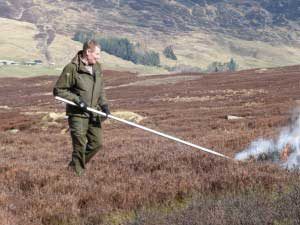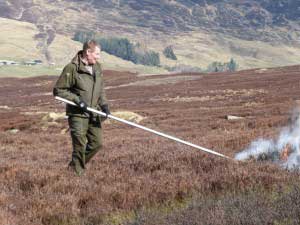 A paper recently published in the Journal of Applied Ecology has widely criticised the EMBER project findings, which claimed prescribed burning was a damaging practice, stating that “it has several significant but overlooked methodological flaws” and the results are “unreliable”.
A paper recently published in the Journal of Applied Ecology has widely criticised the EMBER project findings, which claimed prescribed burning was a damaging practice, stating that “it has several significant but overlooked methodological flaws” and the results are “unreliable”.
The EMBER project, completed in 2014, aimed to improve our understanding of prescribed rotational burning on water quality, hydrology, and aquatic biodiversity in river catchment areas. Its findings concluded that burning as a management tool causes damage and adversely affects water quality. However, this new paper highlights several flaws, including the lack of account for differences between environmentally-distinct sites and suggests the results are potentially unreliable due to inadequate statistical analysis.
The findings of the paper, written by Dr Mark Ashby of the Lancaster Environment Centre at Lancaster University and Dr Andreas Heinemeyer of the Stockholm Environment Institute at the University of York, concluded:
“Government agencies and policymakers need to re‐examine the strengths and limitations of the prescribed burning evidence base. Future work needs to control for site‐specific differences so that prescribed burning impacts on ecosystem services can be reliably identified.”
Gareth Dockerty, BASC Northern regional officer, said: “Whilst the EMBER project was a groundbreaking study, this new report casts doubts over their findings and clearly calls for more research before any assertions are made. The EMBER project has been used extensively as evidence against the process of prescribed rotational burning, this new peer-reviewed paper is essential for forging a way forward.
“BASC will be updating policy makers, MPs and government agencies of this new paper to ensure they have the latest information to hand and are not led to believe the EMBER project is definitive in its findings.”
Image by Trevor Martin
